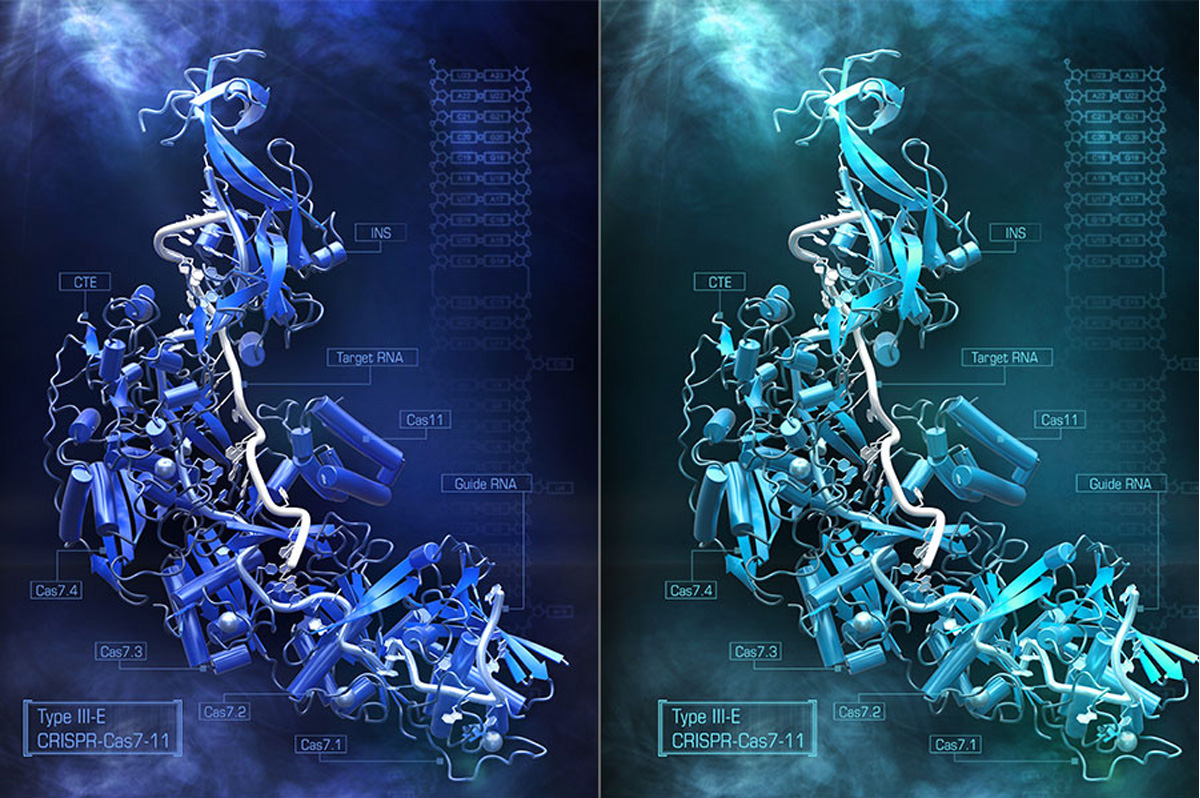
MIT-Led Research Team Adds Compact Cas7-11 Enzyme to CRISPR Toolkit
June 22, 2022| |
In 2021, researchers at the Massachusetts Institute of Technology's McGovern Institute for Brain Research discovered and characterized Cas7-11, the first CRISPR enzyme that makes precise, guided cuts to RNA strands without harming cells in the process. Now, with collaborators at the University of Tokyo, the same team reveals that Cas7-11 can be shrunk to a more compact version, making it an even more viable option for editing the RNA inside living cells.
The discovery of Cas7-11 opened the doors to a more precise form of RNA editing. However, Cas7-11 is a massive protein and too big to fit inside a single viral vector. Using cryo-electron microscopy, the research team knew that Cas7-11 was like an amalgamation of five separate Cas enzymes, fused into one single gene, but they were not sure exactly how those parts folded and fit together.
McGovern Fellow Jonathan Gootenberg said that the act of binding its target tRNA strand and the guide RNA revealed how the pieces assembled and which parts of the protein were critical to recognizing and cutting RNA. The researchers also found a section of the protein without any functional role. The researchers removed it, re-engineering Cas7-11 to make it smaller without taking away its ability to target RNA. The team tested the impact of removing different bits of the section, resulting in a new compact version of the protein, dubbed Cas7-11S.
For more details, read the article in MIT News.
| |
You might also like:
- Pocket K No. 54: Plant Breeding Innovation: CRISPR-Cas9
- CRISPR-Combo Edits and Regulates Genes at the Same Time
- Cas-CLOVER, an Alternative to CRISPR-Cas9
Biotech Updates is a weekly newsletter of ISAAA, a not-for-profit organization. It is distributed for free to over 22,000 subscribers worldwide to inform them about the key developments in biosciences, especially in biotechnology. Your support will help us in our mission to feed the world with knowledge. You can help by donating as little as $10.
-
See more articles:
-
Gene Editing Supplement (June 22, 2022)
-
Research and Tools
- Rice With More Resistant Starch Made Possible Using CRISPR-Cas9
- Researchers Use CRISPR-Cas9 in Cultured Oysters
- CRISPR SWAPnDROP Enables Efficient Large-Scale Interspecies Gene Transfer
- MIT-Led Research Team Adds Compact Cas7-11 Enzyme to CRISPR Toolkit
- Experts Enhance Editing Rates of CRISPR-Cas12a
-
Public Acceptance and Engagement
- Experts Discuss Addressing Public Acceptance of CRISPR in Agriculture and Medicine
-
Read the latest: - Biotech Updates (December 17, 2025)
- Gene Editing Supplement (December 17, 2025)
- Gene Drive Supplement (February 22, 2023)
-
Subscribe to BU: - Share
- Tweet

